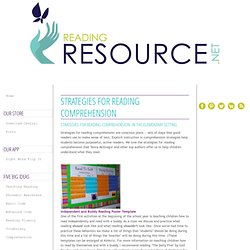

Welcome to the Learning Toolbox. Inference - teachapedia. Common core standards Related articles Teaching strategies What are inferences and how do we make them?

Inference is when readers read between the lines of the story. Beck Binks, at St.Francis, says that inference is “when a reader combines clues from the text with their own background knowledge or from other parts of the text in order to draw conclusions.”[1] Students become detectives "using the reading strategies they have as tools to find evidence from the text,and their background knowledge so that they can draw conclusions. " [2]. A question What the text says What I think My answer or what I infer [3] Beck Binks goes slightly farther, saying that to infer, “We need to find clues to get some answers. One strategy for making inferences is the KIS Strategy, which is a mnemonic that teaches students to follow these steps: Another strategy comes from ASCD Teaching Inferences Publication.
“Question 1: What is my inference? Question 2: What information did I use to make this inference? Pictures. Teach Kids to Think About Their Thinking — Metacognition. Resources for Teaching the Seven Strategies for Reading. Prior Knowledge: Lesson Plans. AdLIT > Reading Strategies. Tips for Teaching Inference. Inference can be a tricky reading strategy to teach, which is a bit ironic since most of us are constantly inferring things about the world around us, and have been since a fairly young age.

The trick is to help kids learn how to do it with text. Here are some suggestions for helping your students to learn this skill. Be sure your students know what inference is (and what it isn't) Inference is using facts, observations, and logic or reasoning to come to an assumption or conclusion. It is not stating the obvious (stating the obvious: that girl is wearing a fancy dress and carrying a bouquet of flowers. inference: that girl is a flower girl in a wedding).
It is not prediction, though the two are definitely related. Let them know they are already experts Find ways to show how they infer things all the time. Come to school in a T-shirt from an event such as a charity run, concert, or theater performance. Use pictures from Amazon. What is my inference? Make it a challenge Make it fun.
Reading Is Thinking. Reading Strategies & Reflection Art Idea. So, overall, I have really enjoyed my time in 5th grade.

Over Christmas I spent some time re-thinking what I am doing in my class. I realized that what I missed most about teaching a younger grade is doing the Daily 5 for real. I LOVE reading with small groups of kids at the little reading table. It's my favorite. I couldn't figure out how to make Daily 5 really really work with my 5th graders because my room is too small for all those bodies.
Well, now I've gone way back to the basics. Also, like many of you, we are gearing up for STAAR! I know words like conflict, resolution, resolve, etc are really simple, but if you teach ELLs, they need to hear those words quite a bit so they understand them on the test. And foreshadowing...I don't think I learned what that meant until like 8th grade, but my kids are doing well with it! Super Six Comprehension & Good Reader Strategies.
Shrinking notes. Inference with Pictures. All About Adolescent Literacy. Strategies for Reading Comprehension. Strategies for reading comprehension are conscious plans — sets of steps that good readers use to make sense of text.

Explicit instruction in comprehension strategies help students become purposeful, active readers. We love the strategies for reading comprehension that Tanny McGregor and other top authors offer us to help children understand what they read. Reading Process Poster Template By enlarging the following template and laminating, you can write (with a dry-erase marker) important reading processes and applications for children to discuss and understand during and after a piece of literature is read. READ-O As mentioned on the Reading Fluency Activities Page, students are encouraged to read each night at home with their families and keep track of the books they read.